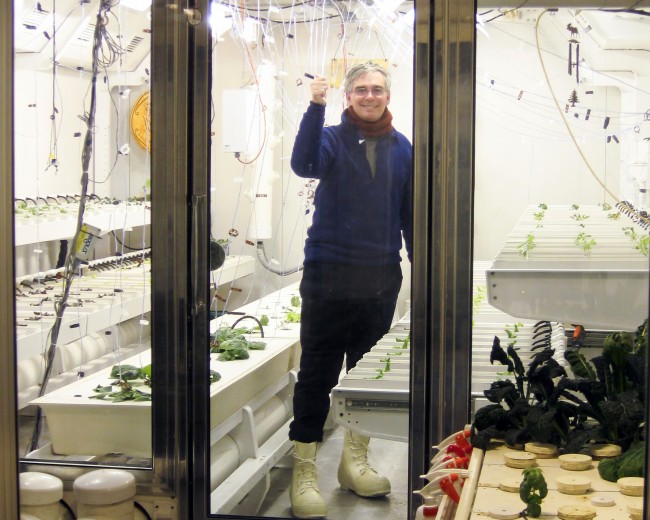30 January 2010
The Greenhouse At The Bottom of The World
Posted by Dan Satterfield

That's me in the hydroponics unit at the South Pole. I was asking questions for some Huntsville Students competing in a national science competition.
A little story for you.
I’m on the board of our great science museum, SCI Quest, here in Huntsville. Just before my trip to the South Pole, I found out about a project some students were doing with help from Sci Quest. I was asked if it might be possible to get some info or pictures of a greenhouse in Antarctica for them.

Lane Patterson operates the vegetable grow unit at Amundsen - Scott Station at the South Pole.
The students are involved in an eCybermission project on hydroponics. This is a free web based science, math,engineering and technology competition for students grade 6-9. When I saw what they were working on, I promised to try and bring back something for them.
So four weeks and 13,000 miles later, I’m walking down to eat dinner at Amundsen Scott Station at the South Pole, and guess what I see?? A hydroponics greenhouse! Dinner was delayed while I grabbed my cameras. Best of all, the operator of the unit Lane Patterson was there!
Lane calls this the vegetable growth unit and it’s not just for science. It provides fresh vegetables to the researchers and support staff wintering over at the South Pole. No planes can reach the Pole during the long polar night, and this is the only supply of fresh vegetables available.
Lane works out of the University of Arizona with the Controlled Environment Agricultural Center. They received a grant from the National Science Foundation to build and operate the unit. Lane is employed by Raytheon Polar Services the NSF civilian contractor to operate the unit.
So, take a look and see how it works , and how Lane grows things from 9,000 miles away in another desert – Arizona.
Oh, and yes, the students at Sci Quest will have this video and more.


 Dan Satterfield has worked as an on air meteorologist for 32 years in Oklahoma, Florida and Alabama. Forecasting weather is Dan's job, but all of Earth Science is his passion. This journal is where Dan writes about things he has too little time for on air. Dan blogs about peer-reviewed Earth science for Junior High level audiences and up.
Dan Satterfield has worked as an on air meteorologist for 32 years in Oklahoma, Florida and Alabama. Forecasting weather is Dan's job, but all of Earth Science is his passion. This journal is where Dan writes about things he has too little time for on air. Dan blogs about peer-reviewed Earth science for Junior High level audiences and up.